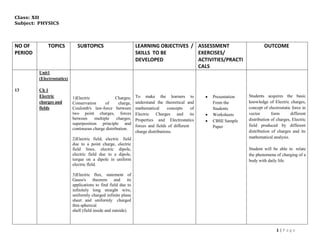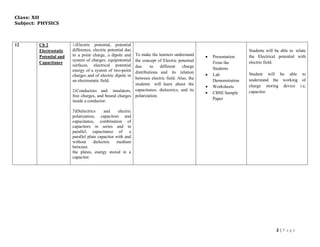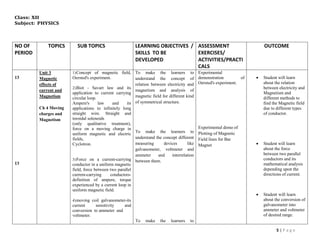The document outlines a physics curriculum for Class XII covering 8 units including topics like electrostatics, current electricity, magnetism, electromagnetic induction, optics, modern physics, and semiconductors. It provides details of the topics and subtopics covered in each unit along with the learning objectives, assessment exercises, activities, and expected outcomes. The curriculum aims to help students develop conceptual understanding and problem-solving skills in key areas of physics.












